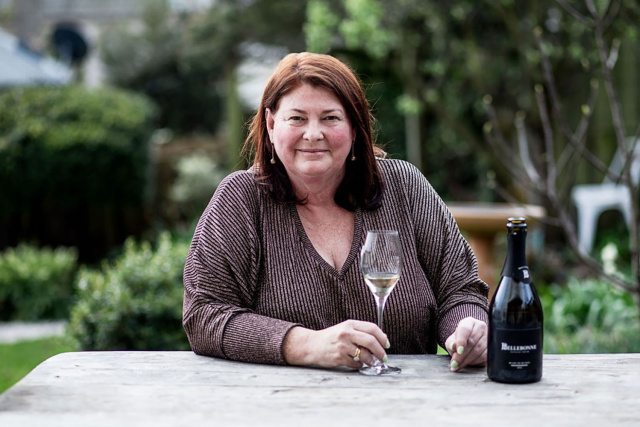Grown in harsh conditions at the edge of the world and crafted by the most talented and persistent of wine folk, Tasmanian bubbles has taken a permanent residence in the line-up of the world’s best fizz (alongside some of those other regions that we can’t name). Methods to describe this little island’s sparkling wine are as plentiful as its accolades but, put simply, it’s good. Very, very good.
Barringwood
Barringwood’s Vanessa Bagot decided that Tassie was the place for her during a holiday to the island and a cellar door visit that eventually landed her and husband Neville the ownership of a vineyard.
At the age of 19 and working as a waitress during a gap year in the UK, Vanessa discovered her love for sparkling wine in a similarly serendipitous fashion. The story involves a day's wages spent on a bottle of Veuve Clicquot, luxuriously enjoyed from a plastic cup in a park across the road from her barely-habitable digs – celebrating nothing beyond the fact that she was young and free enough to do exactly that.
While she may not have had an intimate appreciation for the precision involved in crafting this mystifying elixir at that particular time, Vanessa now relishes both the scope for creativity and the ongoing pursuit of excellence required to make truly world class sparkling wine. From nurturing grapes on the vine right through to finally enjoying the finished product (often many years later) the process is both intricate and patience-commanding.
Vanessa says that sparkling wine feels like freedom – perhaps akin to that delightful, sunny afternoon of her youth. At the same time, it represents the life-affirming experience of being connected to others; sharing, talking and laughing over a glass (or two).
Barringwood’s signature sparkling is their Classic Cuvée, named as such because it is a traditional blend of Pinot Noir, Chardonnay & Pinot Meunier varieties. Its complex palate of delicious, fresh primary fruit belies the extended time on lees, made in the superior traditional method and designed to be enjoyed from whatever suitable vessel you have on hand.
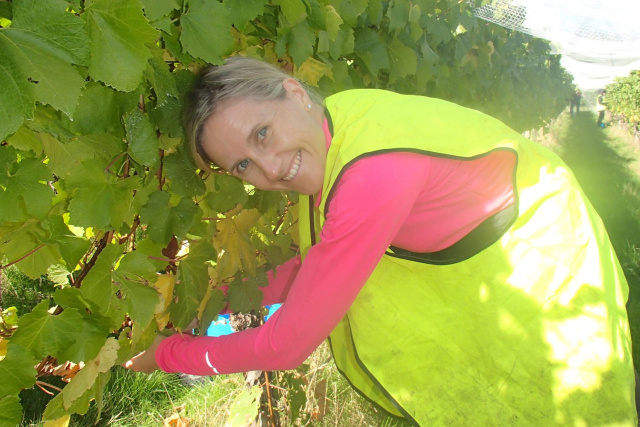
Small Wonder Wines
Small Wonder’s freshly-released inaugural sparkling wine has recently hit the tasting bench. Although this idyllic vineyard at the top of the Tamar Valley is not new, the wine brand launched with a (wine bottle-sounding) pop last July. So, for those that have become familiar with this label in its short but impressive lifetime this will come as exciting news indeed.
Made from a precise 51% Pinot Noir and 49% Chardonnay, this Méthode Traditionnelle sparkling was hand harvested and whole-bunch pressed to tank before spending 36 months on lees prior to disgorging. Throughout this process the uncontrollable challenges of Mother Nature undoubtedly kept the team on their toes. Despite this (or perhaps because of it), the wine is a perfect balance of crispness and complexity, harmonising vibrant freshness with a nuanced depth, making it equally perfect for casual celebrations and grand occasions.
Cellar Door Manager Robert Stewart describes the wine as a harmonious blend of artistry, elegance and charisma; “it’s like a party for the tastebuds and a disco for the tongue. Dancing 'til the last sip!”
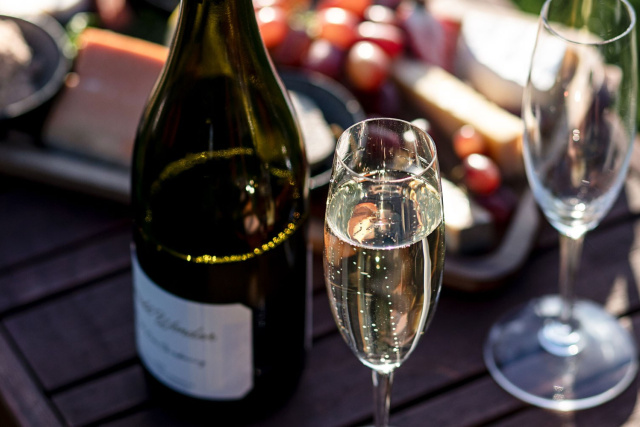
Bream Creek Vineyard
There are few people in the Tasmanian wine sector with as great a volume of well-respected knowledge as Fred Peacock, so it comes as no surprise that his sparkling wine is both highly-awarded and in high demand. His Bream Creek Vineyard began production in 1990, which was early days for Tassie’s youthful wine sector and of the time when plenty of naysayers were still convinced that wine grapes couldn’t be grown in this harsh climate at the Southern edge of the world.
Fred focused on growing wines of the non-effervescent kind for the first 15 or so years. However, when an amount of his meticulously-tended fruit began its journey bound for Ed Carr’s famous House of Arras label, sparkling wine began to pique his interest.
Fred likens his sparkling wines to French actor and bon vivant, Maurice Chevalier – known for his charm, sophistication, and love of the finer things in life. However, not forgetting that a little fun is an important part of the recipe; when Fred released his inaugural 2005 vintage sparkling he took a sample sailing with friends on a small yacht. When it was time to open the celebratory bottle, he had neglected to take the motion of the boat into account and the cork – along with half of the contents – became the property of King Neptune.
Fast forward to today, and Fred’s sparkling wine has enjoyed two consecutive years of success at the Champagne and Sparkling Wine World Championships in London. In high demand (and for good reason) getting a taste might be equally as challenging as it was on Fred’s sailing expedition. While visiting their newly-opened cellar door at Marion Bay is probably your best bet – no promises – Fred reminds us that quality Tasmanian sparkling wine takes time and good things come to those who wait.
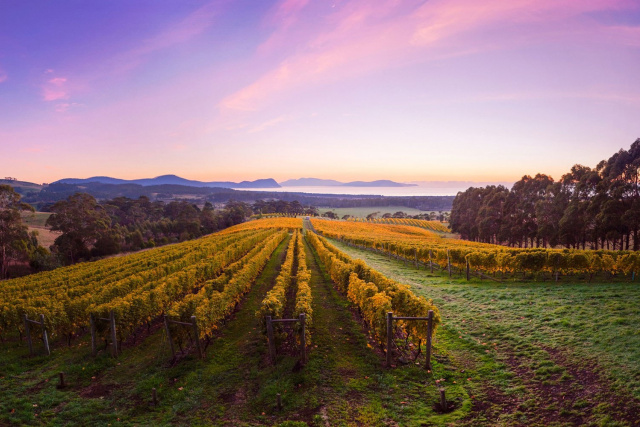
Delamere Vineyards
There are several theories as to how Fran Austin’s infatuation with sparkling wine began. One possibility is a classic ’80s dessert expertly prepared for dinner guests by Fran’s mum called ‘Champagne Ice’ – a frozen sorbet of sparkling wine, orange syrup and Cointreau. The following day Fran and her sister decided that they were suitably sophisticated to warrant a small sample and polished off the leftovers for breakfast. Curiously, her folks never repeated that catering error.
Fast forward from empty dessert dishes to a life partnership with the other half of Delamere, husband Shane Holloway, the pair found themselves in Tassie. They were looking for some domestic chickens when it was discovered that the Richardson's (owners of Delamere Vineyard at the time) had a healthy flock with excess numbers. After being invited to dinner one evening a few bottles of museum wine were enjoyed and it came to light that the vineyard was 'informally' on the market.
For a young family, taking on a vineyard and winery comes with its fair share of challenges. However, Fran says that they’ve managed to chalk up experience with most of them. This includes the creation of their now highly sought-after Delamere 'Late Disgorged' Blanc de Blanc, which spends an impressive ten years on yeast lees. Fran looks after the numbers and knew that cash flow in a young business could simply not justify such an extravagance. So (unbeknownst to her), Shane would hide a quantity of Blanc de Blanc in the back of the shed each year.
One day the couple were tasting a miraculously-discovered bottle of the 2008 vintage. They were both blown away by the quality and after lamenting that there wasn't more of it Fran was presented with the perfect solution. Nowadays, this wine is now just one in Delamere’s estate-grown range. Fran says that she gets asked a lot about the style of these wines, because they are quite distinctive and different (channelling a little Cate Blanchett; powerful, authentic, classy and only getting better with age). The signature Delamere style centres on a unique sense of place and everything informing their creation is inspired by their special patch of land in Pipers River.
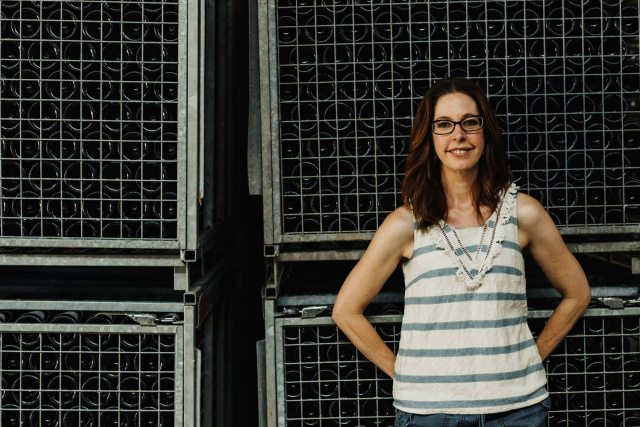
Bellebonne
Fourteen years after she began commuting between the Barossa Valley and Tasmania, Natalie Fryar handed back the company phone, packed up a friend’s old Ford Festiva, a red Kelpie named Bob, 35 pairs of shoes and a very persistent voice in her head – destination Tassie. This was not an uncalculated move; Natalie had worked as the winemaker for Jansz Tasmania for the duration of that time and had firmly decided only a few weeks into that role that making sparkling wine in Tasmania was what she was destined to be doing.
Natalie's focus on sparkling wine was never in question. Rumour has it that she first met House of Arras’ Ed Carr during work experience at the age of 14 and not long after embarked on a mission to understand every complex nuance of these tiny, fermentation-derived bubbles. This journey was routed via a role at Seppelt Great Western, where she first tasted Tasmanian Pinot Noir juice. No other career, winemaking specialty or wine region stood a chance.
Natalie says that sparkling wine is the greatest method in the world to capture a time and place in nature. Tasting Bellebonne is like taking that first breath of clean, crisp air when you step off a plane or boat in Tassie and – if you close your eyes – it transports you to a place of ethereal perfume and sparkly gemstones. Eight years after she first landed on the island to make Tassie her home the Festiva is gone, but Bellebonne is here to stay.
Natalie is a firm believer that the flagship wine in the range is not necessarily the rarest nor most expensive, but the wine that the most people will have the chance to experience. So, for Bellebonne the flagship wine is Bellebonne bis – 'bis' means both 'the space between' and 'kiss'; “it's a non-vintage wine so it occupies the space between our vintages, but also it is like a cheeky little kiss of goodness. Bellebonne means 'beautiful and good' – just like Tasmania.”
